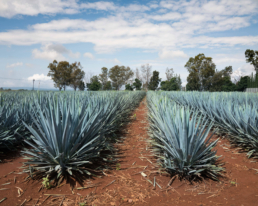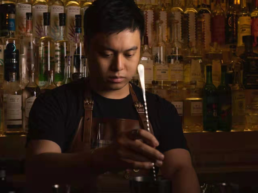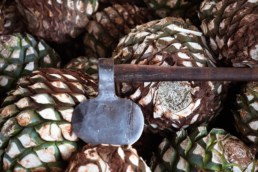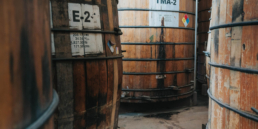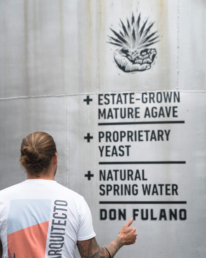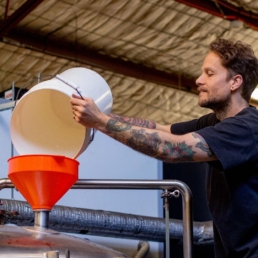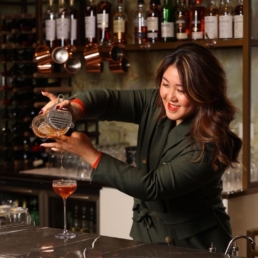
ASIA PACIFIC, 21 JULY – Tequila, like any spirit, has its own complexities and nuances that are waiting to be explored. The world of tequila, in particular, has many facets that you may not know about if you’re not already steeped in it and familiar with the culture surrounding it. Interest in agave spirits continues to grow, and there have never been more tequilas lining liquor store shelves — be they celebrity-branded or craft blended. Each tequila has its own unique characteristics and flavour profile.
With so many tequilas available, finding exceptional tequila can be a challenge. That’s why we turned to the pros from behind the bar to share their tips on what you need to know about tequila if you want to drink the best stuff out there.
The word tequila comes from an Aztec word te-kuia meaning “the place where we were born” as it was originally produced for hundreds of years before the Spanish conquistadors arrived in Mexico. Made from the Weber blue agave plant (also known as *agave tequilana*), the bulb or “piña” is baked and juiced before being fermented in tanks with yeast and then distilled to make tequila.
There are two main regions in Mexico’s Jalisco where agave is grown: the highlands, known as Los Altos, and the lowlands, sometimes called “Tequila Valley,” which are closer to the city of Tequila itself. These areas produce tequilas with dramatically different flavour profiles. Lowland tequilas tend to have more vegetal flavours like grass and sage than highland tequilas; they also tend to taste less sweet than their counterparts from higher altitudes. Highland tequilas, on the other hand, are usually smoother, sweeter, and fruitier than lowland tequilas. Recognising the importance of these two primary growing areas can be a big step to understanding the intricacies of Mexico’s premier spirit.
100% agave is a must when I’m selecting my choice of Tequila. Small batch and tequila from Los Altos would be my preference since there will be richer and more minerality in the spirit.
While I do enjoy drinking tequila neat without any other chaser so that wouldn’t affect the original flavour itself, this is also a fantastic spirit to be used in cocktails for a more wild and vegetal lift.
Tequila, like wine, is an expression of the place where the agave is grown. And not all tequilas — again, like wine — are created equal. So, the next time you enjoy your favourite tequila, keep an eye on the regions and the fields where its agave was grown. While many producers are vague about where their agave comes from, Arquitecto produces batches of tequila that are sourced from the lands of Master Tequilero, Enrique Fonseca, who is known for creating tequilas rich with agave character yet graced with a delicate finish. With no additives, diffusers, immature agave, and non-agave fermentation sugars, every bottle of Arquitecto is spectacular with its own clean character and is an easy choice to start your tequila journey with.
“Always avoid Mixto Tequilas! Having a smooth Blanco Tequila such as Arquitecto is perfect; great in cocktails and great as our house shot too! Generally, it’s great to experiment with and works with almost everything.” — Stuart Campbell, Bar Manager of Margo’s, New Zealand
Once you’ve understood the fundamentals of this spirit, take your own tequila connoisseurship to the next level. Whether you prefer to sip it neat, on the rocks, or in a cocktail, each different style of tequila will strongly influence your experience.
There are five types of tequila depending on how long they have been aged in oak barrels. A blanco (white) has no ageing process and is bottled immediately after distillation, a reposado (rested) sits in oak barrels between two months and one year, an añejo (aged) ages between one year and three years while extra añejo (extra aged) sits for more than three years.
At Cantina OK!, we make margaritas with a mix of Tequila and a dash of Mezcal. The key to the flavour in a margarita is using lime squeezed right in the moment. The taste of the oils that are expressed from the skin of the lime is as important as the juice.
Personally, I have been returning to drinking tequila with lime and salt. There is something so honestly exciting about the whole process. I’m not really sure why we collectively decided it wasn’t cool but I’m all for bringing it back.
The taste of tequila elevates cocktails thanks to their distinctive agave flavour. The sweet and sugary essence followed by notes of vanilla and cinnamon makes it a great base for a Margarita and a Paloma!
When you start to understand the taste of tequila, I’d definitely recommend food pairings such as blanco with seafood, aged tequila with red meat or chocolate, and citrus and fresh herbs also works particularly well with the flavour of agave.
As you learn about how to enjoy tequila, remember that just like any other spirit, there is no one right way to drink it. As long as you do it thoughtfully and respectfully, feel free to experiment until you find what works best for you. The key thing is to not let preconceived notions about what kind of tequila you should drink limit your options. Remember, it’s supposed to be fun! The most important thing to keep in mind when drinking tequila is moderation. When used responsibly, all forms of tequila can make great drinks.
ABOUT TRUE BELIEVERS SPIRITS
True Believers was conceived by Proof & Company to offer a range of craft spirits that bridges the gap between economical pouring brands, which often fall short in meeting modern consumer preferences for craft credibility, and super-premium craft spirits, which are generally priced out of reach for house pouring programs. Each of the True Believers brands was developed individually to serve as a versatile archetype of its category, suitable for cocktails and sipping alike. The spirits themselves are produced with authentic craft values by highly-regarded distillers.
ABOUT ARQUITECTO TEQUILA
Created from high-altitude agave grown on the lands of Master Tequilero, Arq. Enrique Fonseca, near Atotonilco in the highlands. Cooked, crushed, fermented, and distilled at his ABV Tequileña distillery in the town of Tequila. No immature agave, no non-agave fermentation sugars, no diffusers, and no additives were used in the production of this tequila.
For more information, please visit True Believers.

